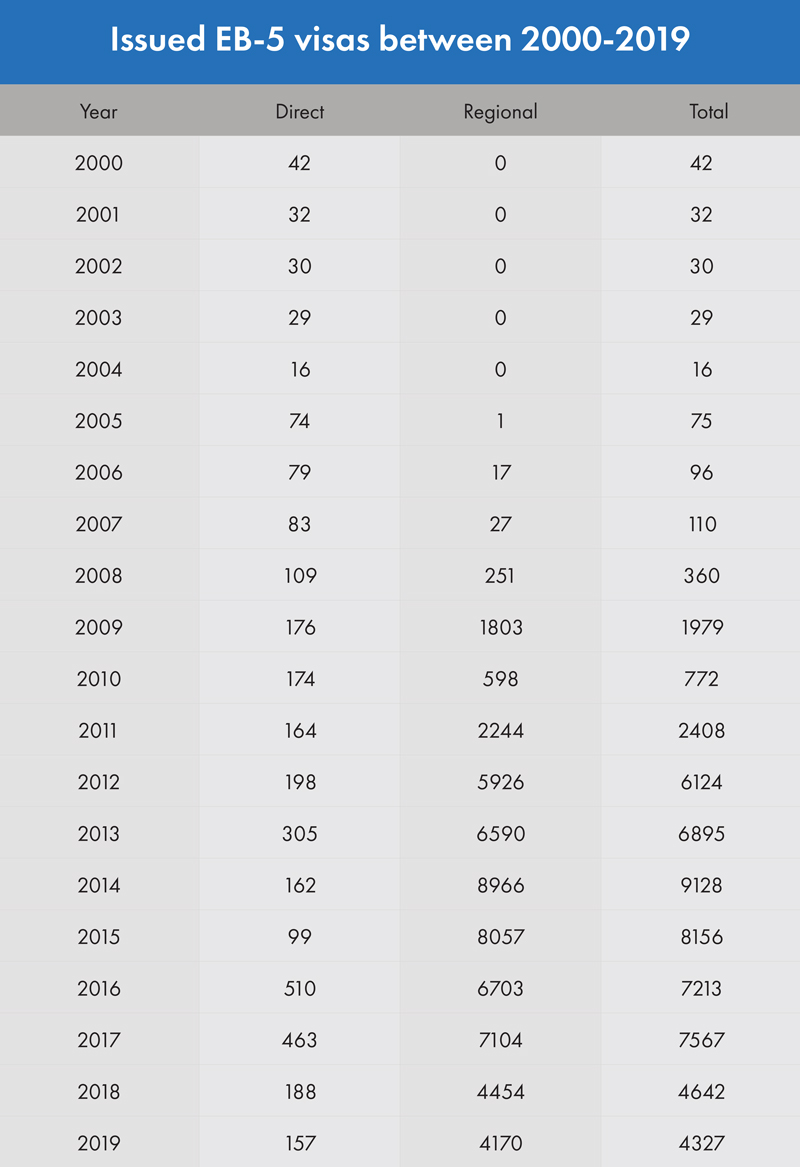
The EB-5 visa program maintains its appeal for mainland Chinese investors.
Mainland Chinese investors continue to dominate the EB-5 visa program, accounting for the largest nationality of EB-5 investors in 2022, according to data from the State Department. Out of a total of 10,885 EB-5 visas issued that year, 6,125 were granted to Chinese applicants.
One reason for a continuously strong Chinese demand of these visas would be the EB-5 Reform and Integrity Act of 2022 (the RIA) and the end of China’s COVID-19 lockdown and policies.
The new regulations have created great benefits for investors from mainland China by creating new visa categories, which have no backlog. The new set aside categories include projects in rural and high unemployment areas, and special infrastructure projects. The ability to file for EB-5 while on another visa in the United States has also brough new opportunities for Chinese investors.
EB-5 statistics for Mainland China: highs and lows
The trend for EB-5 visas issued to Chinese investors from Mainland China has seen several highs and lows over the last two decades.
Between 2014 and 2019, EB-5 visas for Chinese investors showed a steady decline, although it was on the high side compared to the previous decade.
Despite this decline, between the 2010 and the 2019 period, high net worth individuals from China obtained more than 70% of the total 81,125 investor visas issued by the US, according to research.
The highest number of EB-5 visas for regional centers was issued in 2014 (8,966), while the most direct EB-5 investment visas issued to Chinese investors from mainland China was in 2016 (510).

Retrogression situation for Mainland China
With the new EB-5 regulations, new Chinese investors are able to apply for the EB-5 visa without any retrogression if selecting to invest in rural or high unemployment areas and special infrastructure projects.
As of the July 2023 visa bulletin, the final action date for existing Mainland China investors advanced to Sept. 8, 2015. In addition, as of July 2023, USCIS estimated that Chinese investors’ processing times averaged 81,5 months.
If including petition and visa processing times, and many other variables involved in the EB-5 process, a Chinese applicant could see a waiting time of approximately eight years if not using the new set-aside visa categories, according to estimates.
The visa backlog issue for Chinese investors only remains an issue for the investors who don’t use the new set-aside visa categories.
Also, China’s recent accession to the Hague Convention Abolishing the Requirement of Legalization for Foreign Public Documents, also referred to as Apostille Convention, could help streamline EB-5 processing further by allowing quicker consular processing once the I-526E application is adjudicated and reducing the number of days for authenticating documents issued by public authorities. Currently, the Apostille Convention is in force only in Hong Kong.

Future of Chinese EB-5 investors
When Chinese President Xi Jinping came to power in 2013, some believed that China would become so prosperous that many Chinese investors would opt to stay back in their home country and lose interest in immigration programs like EB-5. But the data from the last few years clearly shows that more and more investors from mainland China are continuing to apply for the EB-5 program.
Interested in applying for the EB-5 visa? Take our free evaluation.






